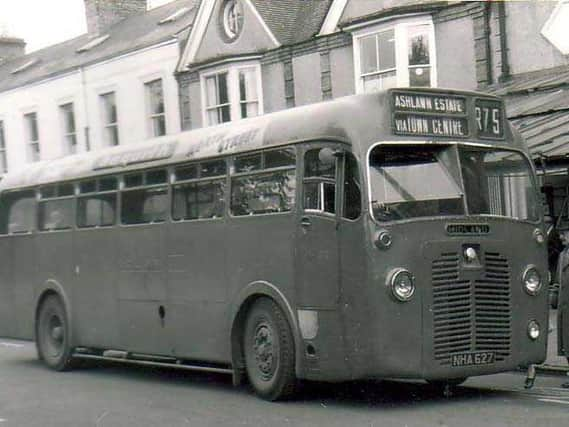Former Advertiser reporter remembers the Bonbon, Raglan Arms… and Sweeney Todd, Rugby’s Demon Barber


It’s the oddest thing. Despite a physical absence of more than half a century, it doesn’t take much for those Rugby memories to come flooding back.
I say ‘physical’ absence. Of course, in my heart, I never really left.
Advertisement
Hide AdAdvertisement
Hide AdApparently, it’s an Anglo-Saxon thing called ‘a sense of place’, which means having a love and longing for one’s home roots.
And boy, you can say that’s got me guilty as charged, all right.
So. First of all, let’s talk about the Bonbon, just a few doors up from where Clifton Road meets the top of Railway Terrace.
And what a palace of delights that was, featuring every type of sweet you’d care to suck.
Advertisement
Hide AdAdvertisement
Hide AdThe shop was also a purveyor of warm roasted peanuts. And that is what I’d like to salivate about first, if you don’t mind.
Ah, those peanuts. I would regularly call at the Bonbon after having my ears ripped off playing rugby football on Hart Field, and buy a bag of those savoury little golden nuggets.
With no fear in those days of being arrested by the health police, these would then be bolted down without pausing for breath by a certain ravenous schoolboy sat at the back of the 4.10pm homeward-bound Churchover bus.
Still retaining their heat right down to the last salt-encrusted morsel, they were absolute heaven in a bag. Death by peanuts was entirely possible, a glorious finale to a life well-lived.
Advertisement
Hide AdAdvertisement
Hide AdBack in its day, the Bonbon was top of the gobstoppers for countless schoolchildren as they milled around waiting to catch their bus home, an oasis of sugary delights that could sweep away the taste of school dinners boiled mutton and cabbage in the time it took to say “Quarter of a pound of peardrops, please!”
Haircut sir? Who could ever forget Horace Stephens’ barber shop just off Little Church Street, where you get enough grease on your coiffure to start a fish and chip shop.
Every four weeks or so, my dad and I would call at Horace’s premises for a father and son haircut session. Dad used to joke to my mother that he was “Going off to see Sweeney Todd” and, not knowing the story of the demon barber, I put my foot firmly in it when, on one occasion, I said: “Good morning, Mr Todd!”
Horace looked perplexed for a moment, and then carried on snipping away, perhaps unaware of the Sweeney Todd story. Meanwhile my hopelessly embarrassed father looked away, pretending to study the tariffs board, but actually wishing the floor would open up and swallow him.
Advertisement
Hide AdAdvertisement
Hide AdAs far as hairstyles were concerned, at the age of eight or nine years old, my wishes didn’t come into it.
“Same as usual, Mr Phillpott?” said Horace. “Yes please, Horace, and a short back and sides for the lad,” said my father. And that was that.
After I had been topped and tailed like a freshly pulled carrot, I would then turn as red as one when Horace applied a scented liquid called ‘spray’, always remarking: “This will get the girls running after you, young John!”
I knew this was coming towards the end of a haircut and so started blushing as soon as Horace reached for the bottle of spray. This had a nozzle and was connected by a tube to a squeezy thing that was pressed in order to deliver its pongy payload.
Advertisement
Hide AdAdvertisement
Hide AdSometimes, my discomfort was further increased when Horace might mischievously add: “Have you got a girlfriend yet, young John?” I would then make a beetroot appear pale by comparison.
In years to come, Horace Stephens would go on to become mayor of Rugby.
Next we must visit the Raglan Arms in Dunchurch Road. During the days of my youth, this was a much-favoured meeting place for many of Rugby’s young people.
The landlord was Frank Haines and he had a very relaxed attitude to youngsters. A discotheque session was run every Wednesday night during the middle to late 1960s by legendary Rugby disc jockey Tony ‘Big’ Fry, who played all the latest soul releases.
Advertisement
Hide AdAdvertisement
Hide AdTony shared a flat in Bath Street with future Pinkerton’s Colours bass player Stu Colman. They both owned enormous record collections, the discs covering so many tables in the living room that there was just enough room to sit down. Stu would later go on to host his own classic rock show on Radio 2.
The Raglan sessions were good fun while they lasted. For a brief while, I took over the DJ’s chair from the Big Fry, my signature tune being Solomon Burke’s Everybody Needs Somebody to Love.
This would, many years later, become the anthem for phenomenally popular cult movie The Blues Brothers.
It’s all a long time ago now. But the nostalgia movie still plays back in glorious Technicolor, a reminder of the days when to be young was truly a gift from the gods.
John Phillpott’s third book Go and Make the Tea, Boy! published by Brewin Books, can be ordered from bookshops and is also available online.